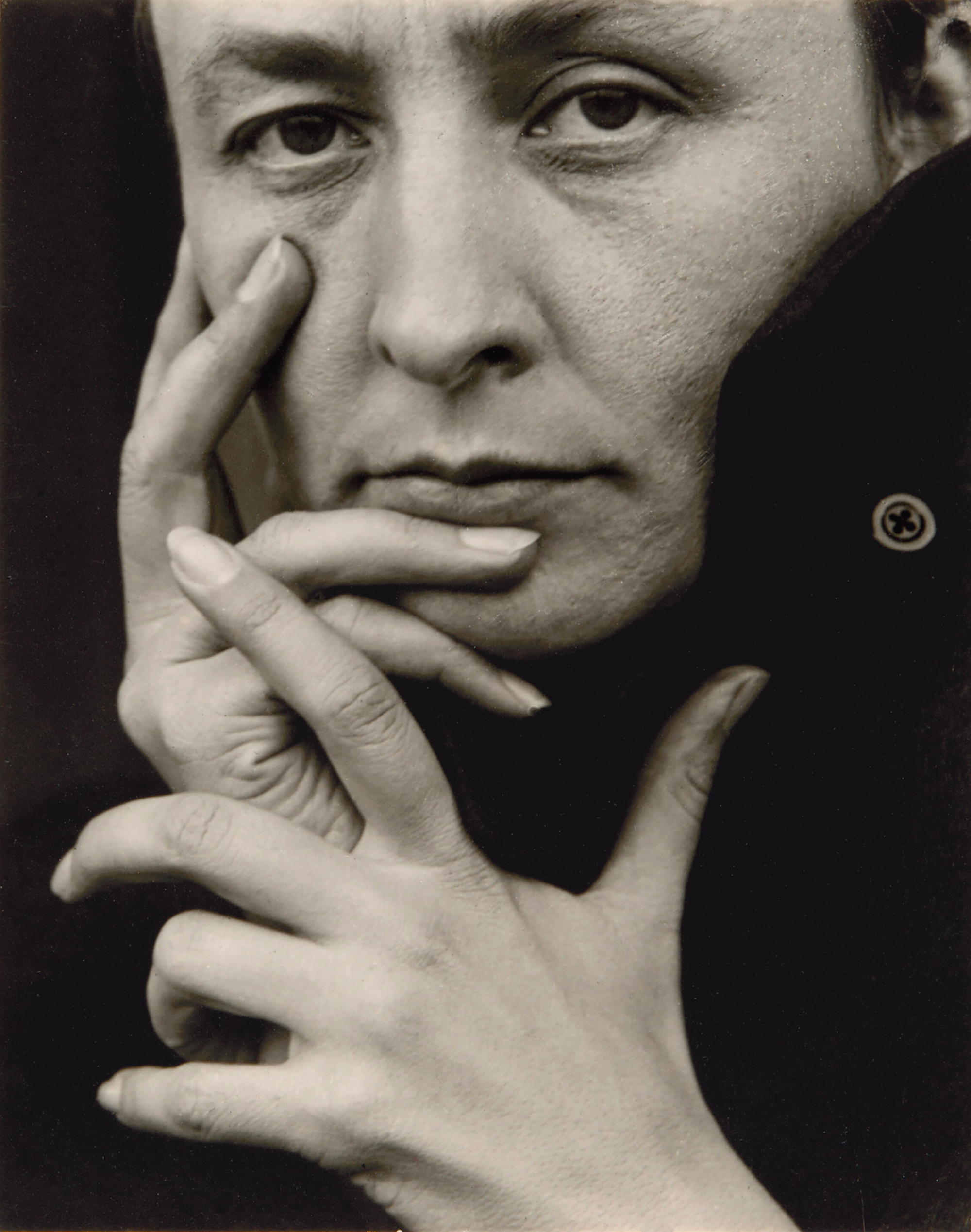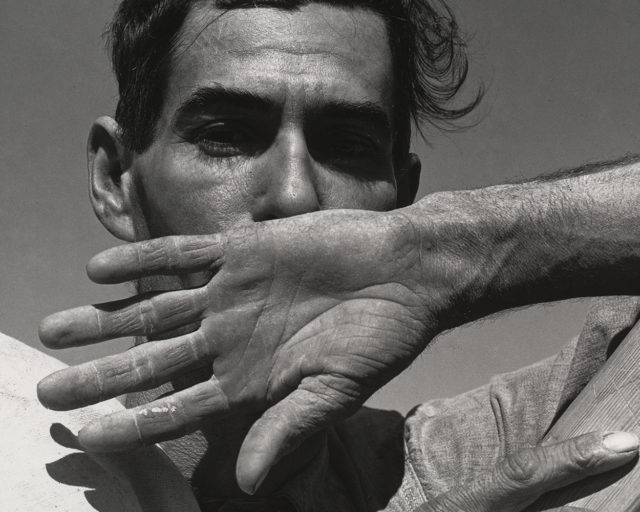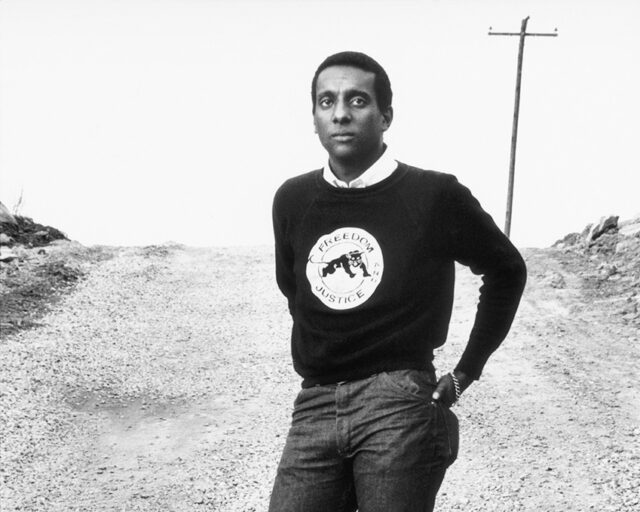Alfred Stieglitz, Georgia O’Keeffe, 1918
Courtesy the Art Institute of Chicago
Consider the origin stories of two famous photographs. In 1936, Dorothea Lange photographed a white woman displaced by the Dust Bowl who was staring into the distance. In the image, the woman’s two children cling to her but turn away from Lange’s camera so we see only their tousled hair. The photo’s protagonist—whom we now know to be Florence Owens Thompson—gingerly touches the corner of her mouth and looks as if she wants to disappear. Migrant Mother became an icon of the Great Depression, and Lange was apparently eager to cast Thompson as a consensual so-called subject. Even though Lange never asked Thompson for permission to snap her, she once told an interviewer that the sitting dynamic had “a sort of equality about it.” For her part, Thompson felt affronted. “I’m tired of being a symbol of human misery,” she later said. “I didn’t get anything out of it. I wish she hadn’t taken my picture.”
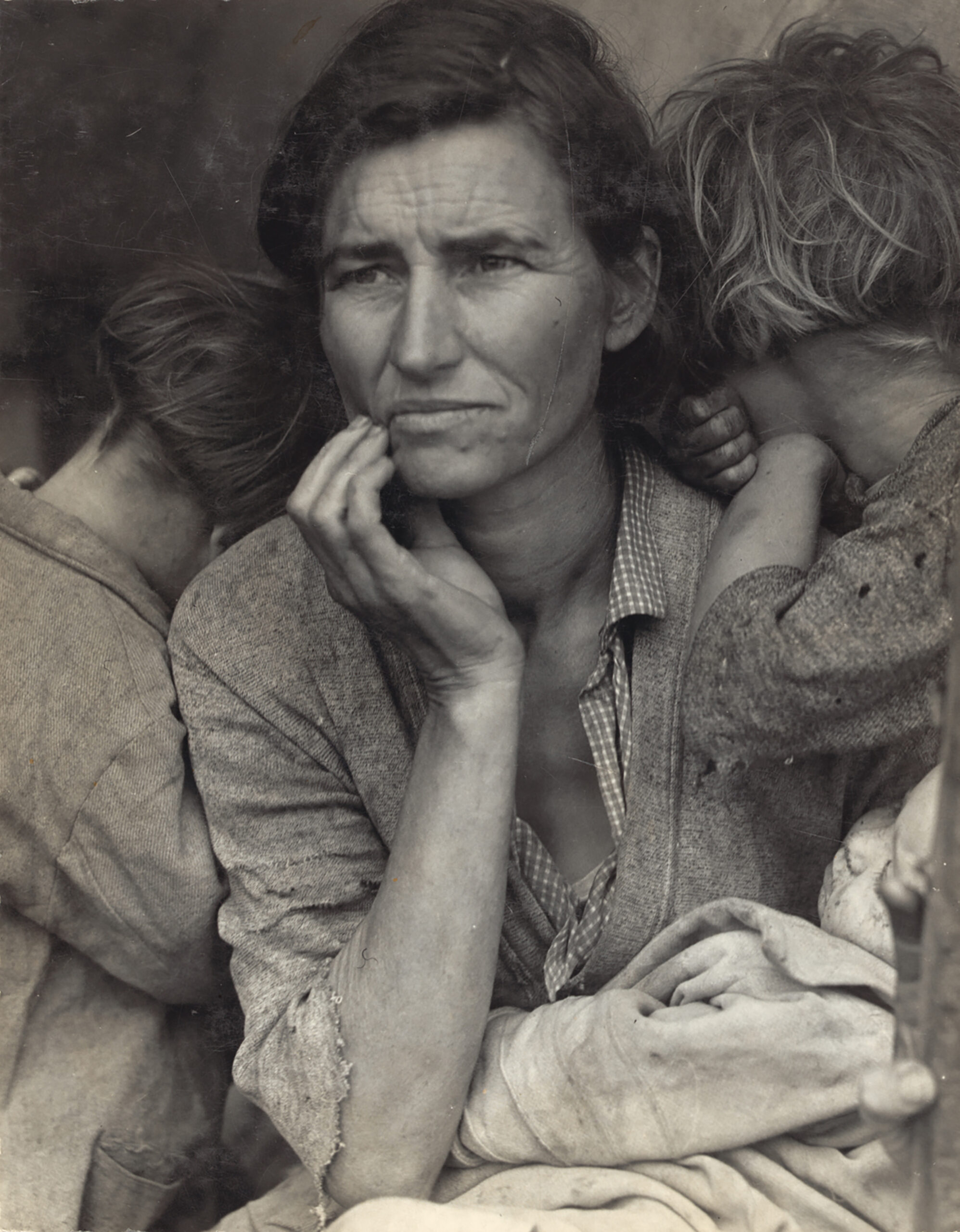
Courtesy the Library of Congress

Courtesy the Metropolitan Museum of Art
In a far more exuberant exchange, Virginia Oldoini, better known as the Countess of Castiglione, orchestrated more than seven hundred self-portraits down to the last detail: the dress, the shawls, the hairdo. In 1863, she commissioned a representative tableau vivant titled Scherzo di Follia from the French court photographer Pierre-Louis Pierson. The masterpiece reveals the countess wearing a tasseled robe, with her salt-and pepper hair swept away from her forehead like spindrift floating up from the ocean. In her bejeweled hand, she presses a surreal monocle made of cardstock up to her eye. “I equal the highest-born ladies with my birth, I surpass them with my beauty, and I judge them with my mind,” she once bragged, in a testament to her amour propre.
One woman was exploited; the other was affirmed. What links Thompson and the countess? In a new book, Collaboration: A Potential History of Photography (2024), Ariella Aïsha Azoulay, Wendy Ewald, Susan Meiselas, Leigh Raiford, and Laura Wexler show us that the women were both photography collaborators—and that the term itself is due a reconsideration. “Collaboration is the condition of photography in the most basic sense,” the authors explain in their introduction. Yet too often participation is “disregarded or unnoticed.” Collaboration offers the stories of Thompson and Castiglione along with 113 other examples from the history of photography (each accompanied by short essays written by art-world luminaries) that should be understood as products of community action—not as rarities birthed from solitary genius. In cases like Thompson’s, collaboration issues from a photographer’s usurpation, which jostles against the photographed person’s manifestations of discomfort or protest; in cases like the countess’, it can be a joyous co-creation made possible by resources and willpower. Regardless, photography is often a group undertaking shaped by power, race, and wealth.

Courtesy the artist
Some of the most important revelations in Collaboration reinterpret important photographs as imperialist-subaltern composites. One example is Nick Ut’s “shooting” of Phan Thi Kim Phúc, the child in Napalm Girl (1972). A ubiquitous figure in Nixon-era reporting on the Vietnam War, and a shorthand for US barbarity, Phúc flees a bombing while nude, screaming, and flayed alive by napalm. How did she “collaborate”? First by suffering, and then by dissenting. “I didn’t like that picture at all. I feel like why he took my picture when I was in agony, naked,” Phúc subsequently asserted. Another case is Marc Garanger’s images of Algerian women, whom he snapped in the 1960s at the orders of a military commander who had stripped them of their veils. Collaboration reproduces three of these images, which show the incensed faces of the captives. In the aftermath, Garanger admitted that “the women had no choice in the matter. Their only way of protesting was through their look.”

Courtesy the artist
Beyond these instances of forced entanglement, Collaboration’s authors also assess that photographic co-action can be generative, such as when community members work together to unearth new narratives. Such hopeful forms of participatory photography are exemplified by Wendy Ewald, who in the 1970s asked her students in rural Kentucky to “photograph themselves, their families, their animals and their community.” Radiant results are found in Denise Dixon’s Self-Portrait Reaching for the Red Star Sky (1976–82), which reveals a young girl jubilantly raising her arms to the empyrean with her eyes closed, and Janet Stallard’s I Took a Picture with the Statue in My Backyard (1980), showing Stallard’s awestruck face as she gazes into her own lens.

Courtesy the artists
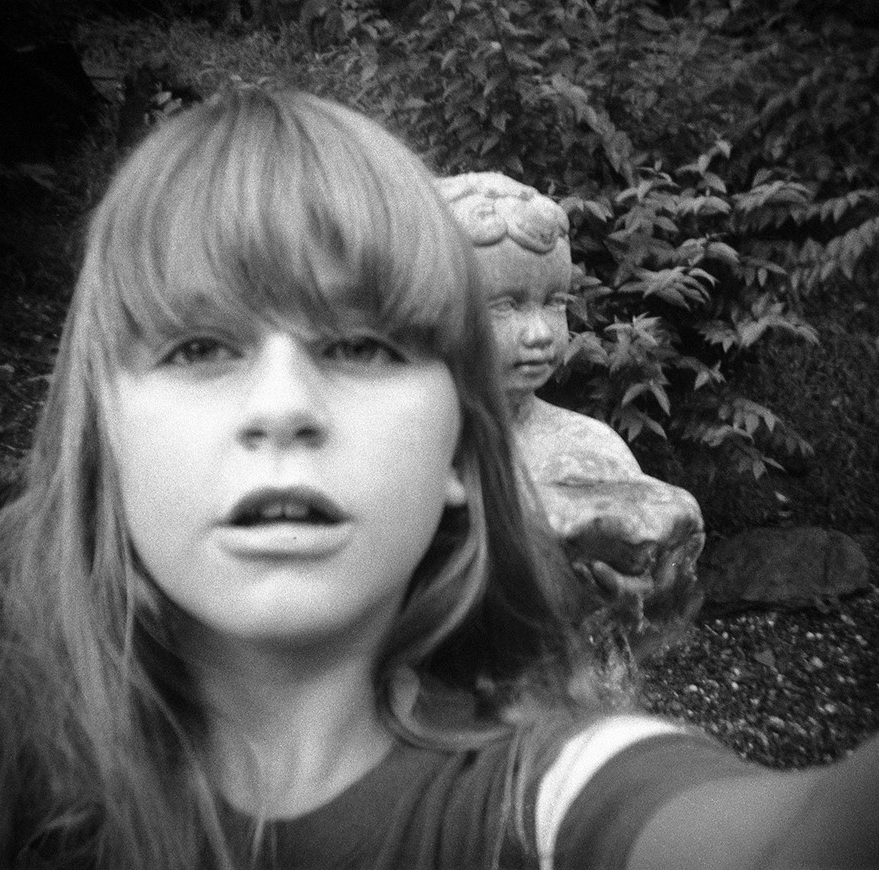
Participatory photography can also take on more expressly activist incarnations. In the 2000s, LaToya Ruby Frazier recorded the effects of environmental racism on her hometown of Braddock, Pennsylvania. Since the late 1800s, many Black Americans have worked at a local steel mill once owned by Andrew Carnegie, and now by US Steel. The mill has polluted the environment with soot, volatile organic compounds, and carbon monoxide to the extent that, in 2022, US Steel had to pay the government a $1.5-million-dollar penalty for “longstanding” air-pollution violations. Frazier and her mother suffered the effects of the toxins and have “battled cancer and autoimmune disorders like lupus,” the artist said. To document these ills, Frazier took pictures of her mom, who then took pictures of her. “It’s irritating when you put that camera in my face,” her mother told her. But the results are striking: Momme (2008) shows Frazier facing the camera and fronted by her mother. Both women’s facial expressions convey the weight of their love and the health problems they carry.
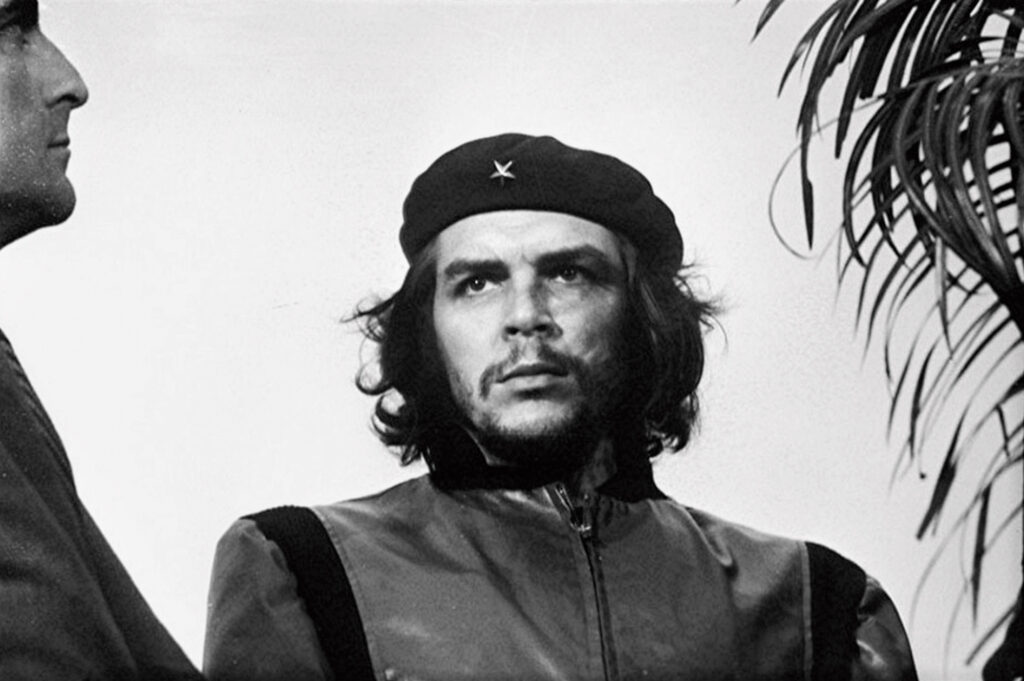
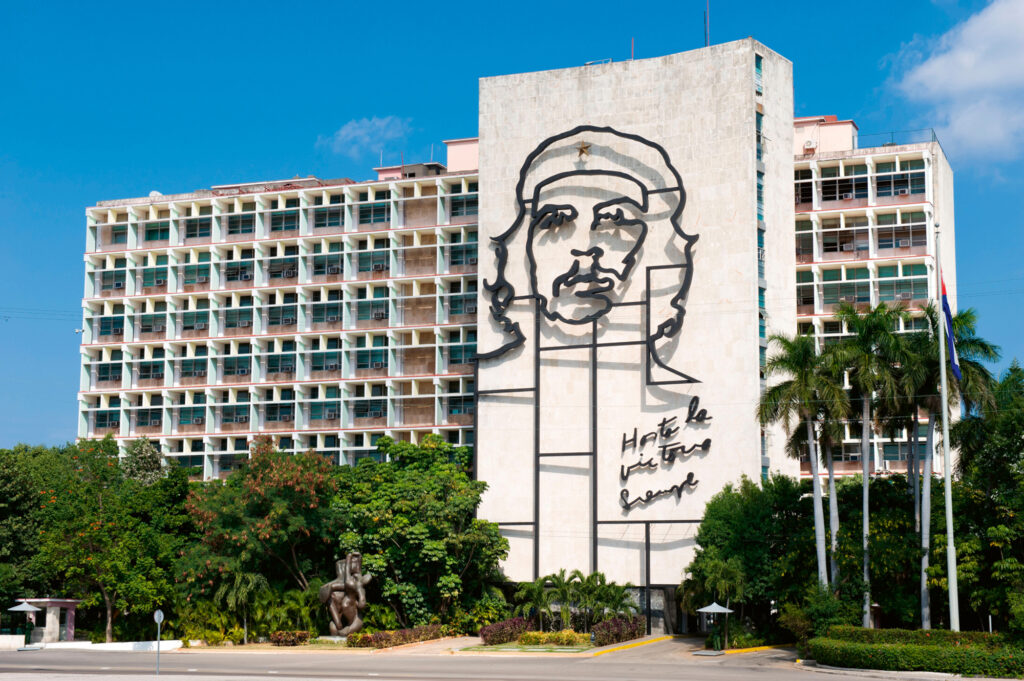
Courtesy GM Photo Images/Alamy
Another photographic collaboration driven by similar environmental and ethical concerns comes from the DIY, opensource nonprofit Public Lab. Since 2019, Public Lab has partnered with communities across the Gulf South to track the health effects of petrochemical plants on nearby Black communities. Public Lab provides local “grassroots mappers” with helium balloons, kites, and digital cameras, which they send skyward to take images that are later stitched together into atlases used to pursue interventions. In an adjoining essay, the artist-activist Imani Jacqueline Brown observes that the endeavor allows locals to “surveil the corporate-state and reclaim both their sense of place and their place in the struggle.”
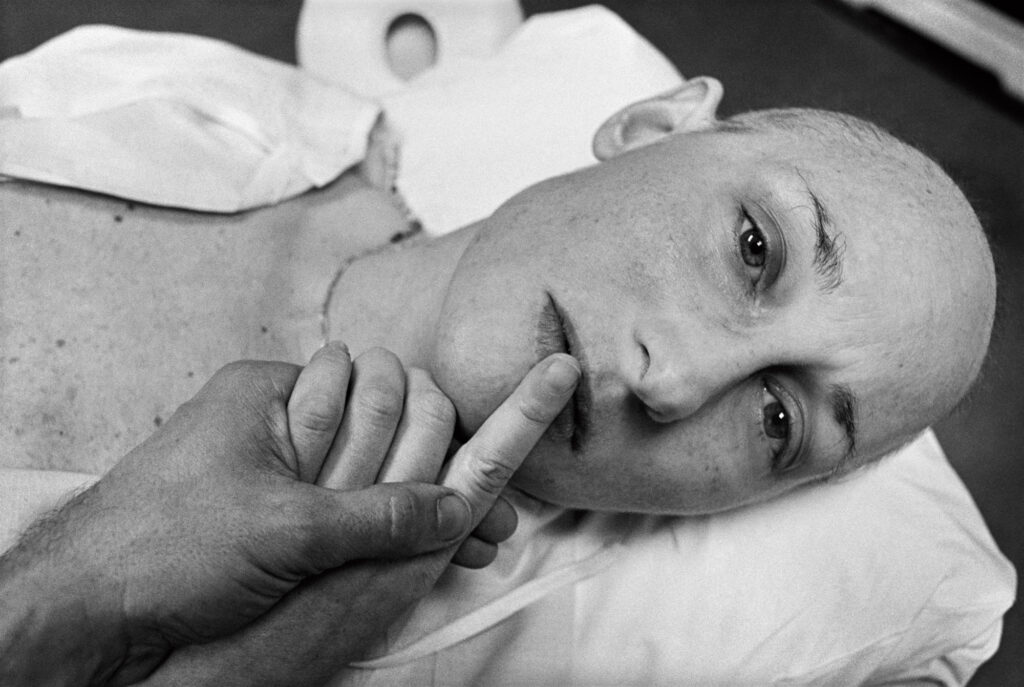
Courtesy the artist
As Collaboration reveals, photography is a wide-ranging practice of joint creation. This discipline ranges from the felicitous exchanges between the Countess of Castiglione and Pierre-Louis Pierson to the dominance and opposition that activates Migrant Mother, Napalm Girl, and Marc Garanger’s arrogations; to the communal imaginings of Ewald, Dixon, Stallard, the Fraziers, Public Lab, and Southern Gulf community members—and also to the viewers and writers who insist on cocreating photographs with their perceptions and critique.
In an age when conflict and disaster photography transfixes audiences with scenes of individuals’ experiences of violence, grief, abandonment, famine, and terror (consider, for example, the current coverage of the crisis in Gaza and the 2023 Libyan floods), we would do well to practice Collaboration’s brand of consciousness-raising. By viewing these images as collaborations, we can pivot from easy narratives about solo photographers who “capture” their “subjects” toward an understanding that the pictures we consume are community-created artifacts whose most important participants often lack full voice and choice.
Collaboration: A Potential History of Photography was published by Thames & Hudson in 2024.










